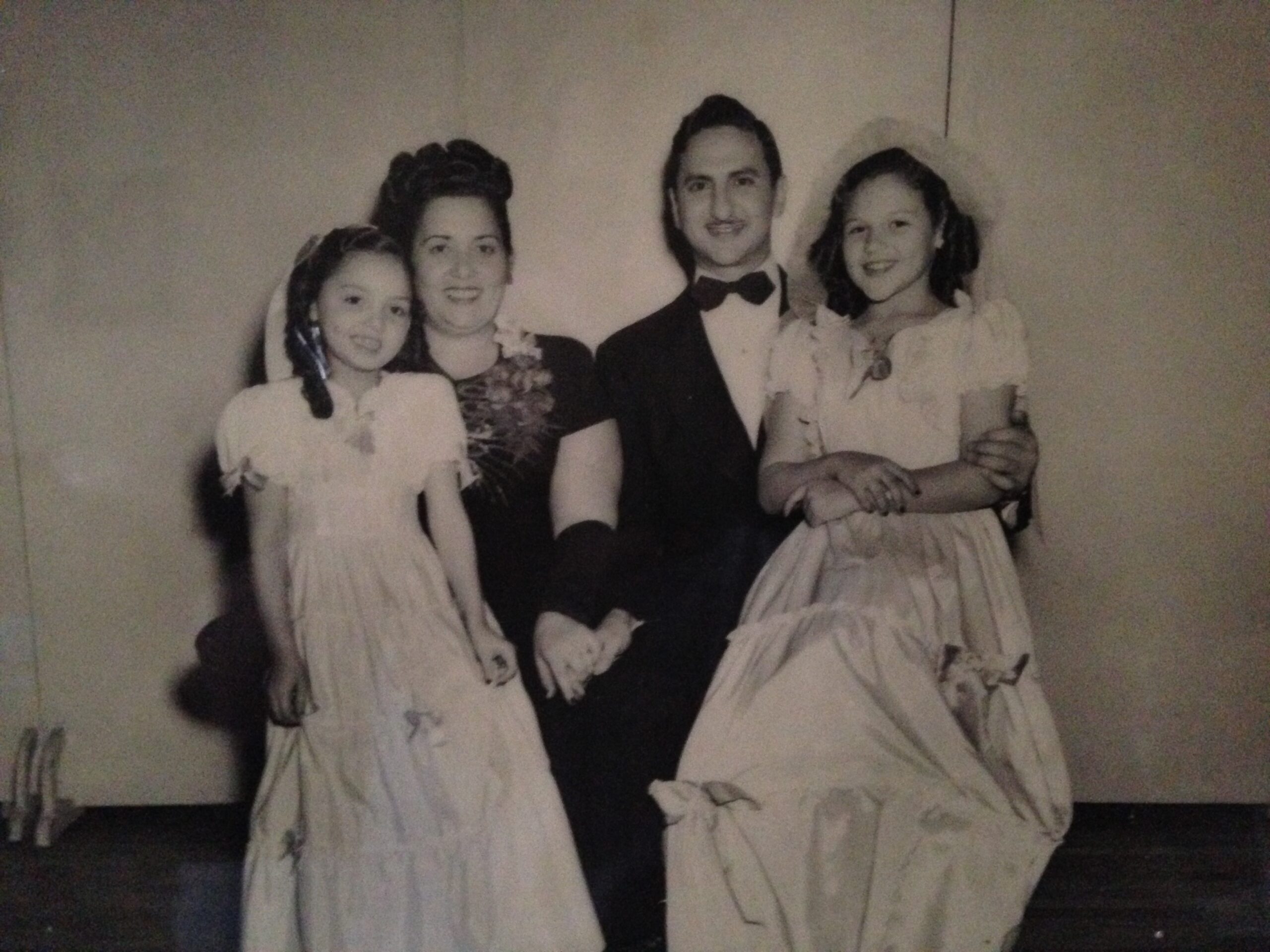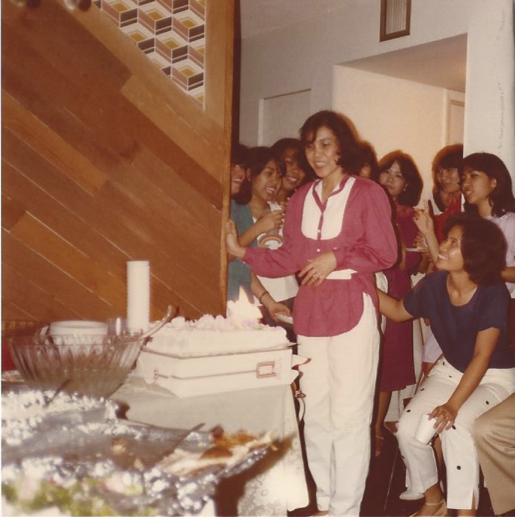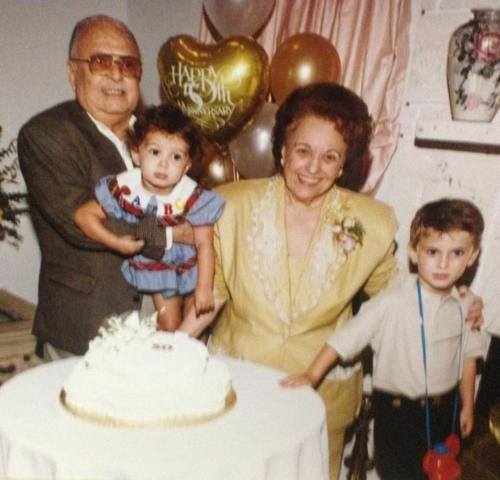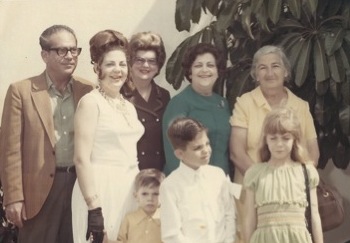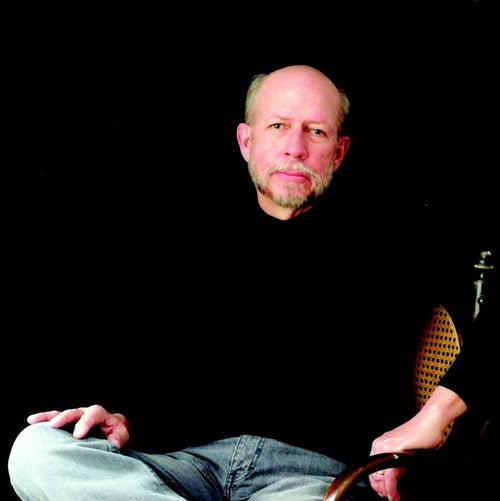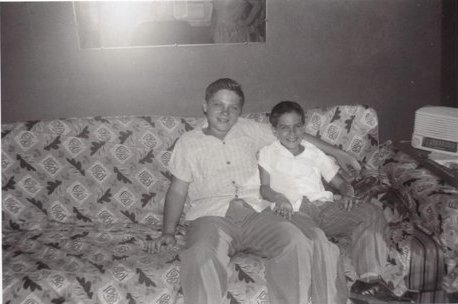The story begins with two people, Mary and Ed. Both born normal healthy babies, Mary in January 1913 and Ed in July 1915.
Mary was the fifth child of Cecilia and Sam Silverman. She had an older brother and three older sisters to love her and help take care of her. Following Mary came three more sisters and one brother.
Ed was the fifth child of Bessie and Max Holowitz. There were two older brothers and two older sisters to welcome Ed into this world.
Growing up with immigrant parents, their lives in Brooklyn were fairly typical in those days.
The summer of 1916 changed everything. An epidemic of polio consumed New York. It affected almost every family, including the Silverman and Holowitz families. Both Mary and Ed were struck with the virus and were left crippled. Mary had no use of either of her legs, and Ed had just learned to walk when his right leg became paralyzed. From the age of 3, Mary wore a brace on her right leg and had to walk with crutches. Ed also wore a brace on the right leg. There was very little known of the disease at that time and doctors could do nothing to restore the muscles that had died.
Instead of feeling sorry for herself or being pampered by her siblings, Mary was treated as any other child and encouraged to do her share of the chores, have self-confidence and learn to use her head so she wouldn’t have to use her legs.
Mary was the only one in her family to graduate high school and she did this with honors. Her hands were golden; she had excellent clerical skills. She held a prestigious secretarial job in Manhattan and traveled daily by subway from Brooklyn to get to that job. Going up and down flights of stairs, walking blocks and blocks, was just part of what had to be done. Snow, ice and all sorts of inclement weather never stopped her.
Ed had a rather different upbringing. His family was ashamed of his illness and kept him in the background for the most part. His family did encourage schooling and all the men, four in total, did graduate college and the two sisters graduated from high school. The family was strong, stubborn, loud, opinionated and vocal.
Mary joined a social group for the handicapped and that’s where she met Ed. It was a wonderful group of people. They tried to do everything “normal” teenagers and young people did.
Ed and Mary fell in love and married in 1936. Ed continued putting himself through college and holding one or more jobs. Mary also continued working until two years later when Cecile (“Cissy”) was born.
With Mary’s handicap taking care of an infant was not easy. Ed’s sisters even threatened to take the baby from her because they said she would never be able to raise a child.
She could not walk and carry a baby at the same time since she needed her arms to support her on the crutches, so she kept a carriage in the apartment and wheeled the baby from room to room. She had no trouble with cooking, cleaning or any other household chore because she was the mother of invention. She found a way of doing everything.
When Ed passed the CPA exam on his first try, he went to his older brother, who was an established CPA with his own practice in Manhattan, and asked for a job. He was turned down flat. He was told because of his handicap he would not make a good appearance in the office.
Mary cried for days when she found out she was pregnant for the second time. How was she ever going to take care of two babies just 28 months apart? She gave birth to another girl, Marcia, and once again, she did what she had to do.
Ed did get a very good job and the family prospered and was very happy. Ed learned to drive and bought his first car, a 1945 Chevy. Mary’s family always lived nearby and could be called on in an emergency, but it always seemed they would ask her to help them rather than the other way around.
The two girls were brought up to be a very independent, learning to do things for themselves and especially helping in the house.
Mary’s eldest sister and her family had moved to Florida after the war. In the terrible winter of 1947 the family packed and left for Florida to attend Cousin Seymour’s wedding. They arrived in Miami to find sunshine and 75-degree weather. “I think we are in heaven!” they cried. Then and there they decided to make moving to Miami a goal. That goal was achieved just one year later in May of 1948. With only $1,500 to their name and no job prospects they arrived all full of moxie and hope.
Ed went to work for an accountant while studying for the Florida CPA exam. He passed easily and opened his own firm. Mary was the office manager and secretary.
They stayed at the Palmer House Hotel on Miami Beach for three months while their tiny two-bedroom, one-bath house, which cost $8,000, was being built. They thought it was a palace; it was theirs. Ed did some gardening and Mary sewed curtains. The girls attended Fairlawn Elementary and then Kinloch Park Jr. High. It was a good time. The “palace” was on Southwest 67th Avenue and 2nd Street, and a Seminole reservation was just a few blocks away. At that time, 1948, Miami ended at Southwest 75th Avenue.
They joined and help form West Miami Jewish Center, which later became Temple Zion. They made some wonderful friends, all transplants from other parts of the country trying to make a new start at the end of the war.
One of Mary’s sisters and her family followed them to Florida that fall. And of course, they stayed with Mary and Ed. The following summer one of the sisters was getting a divorce and asked if Mary could watch her 5-year-old son for the summer. Again, with six other sisters in the family, it was Mary who said yes.
Mary learned to drive a car. The end of the war brought new challenges for veterans and handicapped people. Hand controls were invented so they could drive Hydramatic cars. It was quite rudimentary, but it worked. Mary could add one more feat to her accomplishments.
The girls went on to Miami Senior High School and Mary and Ed bought a new “palace” in South Miami. It was a three-bedroom, two-bath house, with a large Florida room and lots of space to plant fruit trees. Ed became active in local politics and ran for and was elected to the position of commissioner of South Miami.
Troubled boys in the family were sent to Miami for Ed and Mary to “handle.” By then, two more sisters and one brother had moved to Miami. Most of the cousins married, had children and all spent holidays at the Holly’s (My father’s family all changed their names legally from Holowitz to Holly in the 40’s) home. It was not unusual for them to have 30 people for Passover or holiday dinner.
Mary died of a massive heart attack at 62 years old, but not before she saw both of her girls graduate from college and she was able to meet all four of her grandchildren. Ed unfortunately had to bury his dear Marcia, who died of cancer at 49 years old, but he did live to see four of his great-grandchildren. He died of complications of a stroke at age 78.
Their lives were hard, but good. They were accepted into the community, thrived and prospered. They left a good footprint and legacy on this earth. They were truly part of the “Greatest Generation.”

